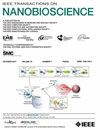Honeycomb-Patterned Graphene Microelectrodes: A Promising Approach for Safe and Effective Retinal Stimulation Based on Electro–Thermo–Mechanical Modeling and Simulation
IF 3.7
4区 生物学
Q1 BIOCHEMICAL RESEARCH METHODS
引用次数: 0
Abstract
The main objective of the present study is to use graphene as electrode neural interface material to design novel microelectrodes topology for retinal prosthesis and investigate device operation safety based on the computational framework. The study’s first part establishes the electrode material selection based on electrochemical impedance and the equivalent circuit model. The second part of the study is modeling at the microelectrode-tissue level to investigate the potential distribution, generated resistive heat dissipation, and thermally induced stress in the tissue due to electrical stimulation. The formulation of Joule heating and thermal expansion between microelectrode-tissue-interface employing finite element method modeling is based on the three coupled equations, specifically Ohm’s law, Navier’s equation, and Fourier equation. Electrochemical simulation results of electrode material reveal that single-layer and few-layer graphene-based microelectrode has a specific impedance in the range of 0.02-蜂窝图案石墨烯微电极:一种基于电-热-机械建模和仿真的安全有效的视网膜刺激方法。
本研究的主要目的是使用石墨烯作为电极-神经界面材料,设计用于视网膜假体的新型微电极拓扑结构,并基于计算框架研究装置的操作安全性。研究的第一部分建立了基于电化学阻抗和等效电路模型的电极材料选择。该研究的第二部分是在微电极组织水平上建模,以研究电位分布、产生的电阻散热以及电刺激引起的组织中的热诱导应力。采用有限元法建模微电极-组织界面之间的焦耳加热和热膨胀的公式是基于三个耦合方程,特别是欧姆定律、纳维尔方程和傅立叶方程。电极材料的电化学模拟结果表明,单层和少层石墨烯基微电极的比阻抗在0.02-0.05Ωm2范围内,与铂电极相当。10μm大小的微电极可以刺激视网膜组织,阈值电流范围为8.7-45μa。用观察到的微电极大小进行的这种刺激表明微电极和视网膜组织在结构上保持完整,并且该装置在热和机械上稳定,在安全限度内发挥作用。结果表明,高密度石墨烯基微电极作为刺激电极改善界面以获得更高的视力是可行的。此外,蜂窝图案中的新型微电极设计配置为视网膜组织提供了无创加热和最小的电刺激应力。因此,它为设计用于视网膜假体的石墨烯基微电极阵列以进行进一步的体外或体内研究铺平了道路。
本文章由计算机程序翻译,如有差异,请以英文原文为准。
求助全文
约1分钟内获得全文
求助全文
来源期刊

IEEE Transactions on NanoBioscience
工程技术-纳米科技
CiteScore
7.00
自引率
5.10%
发文量
197
审稿时长
>12 weeks
期刊介绍:
The IEEE Transactions on NanoBioscience reports on original, innovative and interdisciplinary work on all aspects of molecular systems, cellular systems, and tissues (including molecular electronics). Topics covered in the journal focus on a broad spectrum of aspects, both on foundations and on applications. Specifically, methods and techniques, experimental aspects, design and implementation, instrumentation and laboratory equipment, clinical aspects, hardware and software data acquisition and analysis and computer based modelling are covered (based on traditional or high performance computing - parallel computers or computer networks).
 求助内容:
求助内容: 应助结果提醒方式:
应助结果提醒方式:


